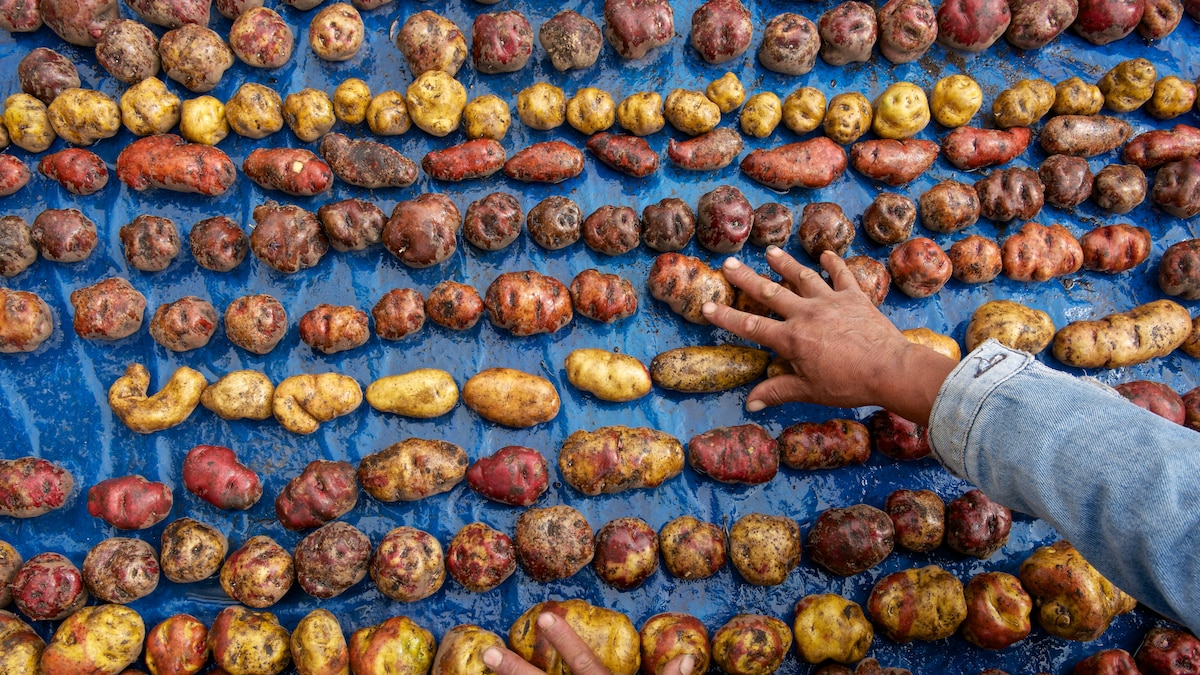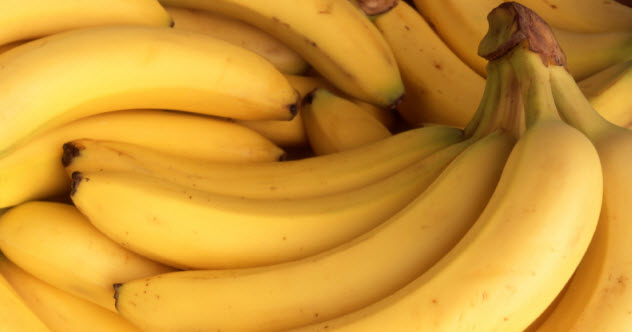Now Reading: How the potato went from banned to beloved
-
01
How the potato went from banned to beloved
How the potato went from banned to beloved

This history of the potato, like the spud itself, has been baked into folklore, mashed into politics, and fried into a thousand origin myths. However, the tuber’s rise to global stardom wasn’t a simple matter of hunger meets harvest—it was a slow-cooked saga of stigma, spin, and sheer necessity.
What started as sacred Indigenous knowledge of the potato was swiftly rebranded as salvation. Monarchs, scientists, and opportunistic propagandists all took turns serving the spud as miracle, menace, or national mascot.
Still, the potato’s real ascent sprouted far from palace gates. While elites thought they were handing down deliverance, it was the people on the ground—farmers, foragers, and famine survivors—who really made the potato take root.
This is the story of how this unlikely outsider made it to the center of the plate, and how optics, politics, and the people who had no choice but to eat it transformed the potato from a rejected root to a revolutionary staple.

A ceremony performed after harvest to bring the spirit of the potato. In Incan civilization, the potato was considered sacred.
Photograph by Jim Richardson, Nat Geo Image Collection
How the potato was first cultivated
Before it became comfort food, the potato was considered sacrosanct. High in the Andes, some 8,000 years ago, the Incas and their ancestors cultivated the crop not just as food, but as fortune. Nutrient-dense, cold-resistant, and capable of growing in thin, rocky soil, the potato thrived where little else could and sustained sprawling pre-Columbian civilizations for centuries.
The Spanish conquistadors introduced the potato to Europe in the 1500s, smuggling it among the spoils of colonization alongside maize, cacao, and tobacco. But while the stolen gold and chocolate dazzled, the potato did not. It was fast-growing but unfamiliar, ugly, and covered in dirt like something best left unearthed. Though it had divine roots in South America, the strange tuber had to dig its way to respectability in the West.
Potato propaganda
By the 18th century, most French recipes were rooted in religion, so while orchard fruits and game birds were celebrated, anything dug from the “devil’s dirt”—like onions, carrots, and especially potatoes—was deemed fit only for peasants and swine. People believed the potato was akinto the deadly nightshade and linked to leprosy due to its spotted skin; it was deemed un-Christian, and its cultivation for human use was banned.
France was facing a famine by the late 1700s and starving—literally and figuratively—for a solution. Due to dreadful weather and poor farming techniques, wheat fields lay fallow, bread was scarce, and bellies were empty.

Portrait of Antoine Augustin Parmentier (1737-1813), French military pharmacist and agronomist.
Photograph by Stefano Bianchetti/Bridgeman Images
But Antoine-Augustin Parmentier, a French pharmacist who survived on potatoes as a prisoner in Prussia, rose to become a staunch spokesperson for the spud. To sway the scientific community, he penned pro-potato pamphlets, won scientific accolades for using potatoes to treat dysentery and replace flour, and hosted glamorous, starch-studded soirées for Parisians and international elites. He also gave the tuber the royal treatment by gifting potato blossoms for Marie Antoinette’s wigs and the king’s lapels to debut exotic potato couture at court.
Still, convincing the aristocracy to enjoy and advertise the potato wasn’t enough. Parmentier had to win over the working class,who had long been taught to despise the spuds. Proving potatoes were edible meant staging the oldest marketing trick in the book: exclusivity. When Louis XVI granted Parmentier 54 acres of land near Paris, he had his potato plants guarded by day and left unprotected at night, tempting locals to “steal” the coveted crop and plant it themselves. The stunt turned curiosity into cultivation.

The redemption of the potato gave working-class families not just energy but also agency, and perhaps a little dignity on their dinner plates.
Photograph by Bridgeman Images
In 1772, the Paris Faculty of Medicine finally stamped the spud “food safe,” sowing seeds of survival that France would soon be forced to reap when its wheat failed. Later in 1789, just as the French Revolution boiled over, Parmentier published a royal-backed murphy manifesto.
You May Also Like
By the century’s end, potatoes had gone mainstream:Madame Mérigot’s La Cuisinière Républicaine became the first potato cookbook, pitching the tuber as “the petrol of the poor,” according to Rebecca Earle, food historian and professor at the University of Warwick.
The potato’s rise beyond Western Europe
While Parmentier was staging tuber tactics in France, potato propaganda was planting roots across the globe. In Prussia, Frederick the Great saw political promise in the crop and ordered peasants to grow it. When they resisted, he threatened to cut off their ears and tongues, then used Parmentier-esque reverse psychology, declaring the potato a “dish fit for a king,” essentially transforming it from pig food to royal fare.
By the 19th century, the potato had evolved into palatable patriotism, driven by rulers, reformers, andscientists who knew that controlling food was a form of power.

Peasants come to steal the potatoes grown by Antoine Augustin Parmentier, French agronomist (1737-1813).
Photograph by Bridgeman Images
Outside of Western Europe, Irish fleeing famine brought tubers into the Americas. In Russia, it became the backbone of everyday diets. Once promoted as a strategic food security crop in China, it’s now the most widely grown staple and a street food favorite in the country. In Peru, the potato’s birthplace, it remains a symbol of cultural pride and biodiversity, with thousands of native varieties still cultivated in the Andes.
From Indian aloo gobi to Korean gamja jorim, the potato has managed to slip effortlessly into any cuisine, reinventing itself wherever it takes root and feeding millions along the way.
The potato’s impact today
In modern Western food culture, the potato has faced a new kind of public relations problem. Once celebrated as a symbol of resilience, today it’s often cast as a dietary delinquent: too processed and too passé.
Much of the demonization of the potato is tied to how it’s prepared. “Most potatoes in the U.S. are eaten as highly processed snack food,” says Earle. “We’ve forgotten that a simple boiled potato is a joy.”
While it may have fallen out of favor in the U.S., the potato’s role on a larger scale is far from fried. In kitchens around the globe, it’s still prominent, feeding billions, and in food policy circles, it’s gaining new attention as a climate-resilient, nutrient-dense staple.
Earle puts it best: “A potato cooked slowly from cold water, gently boiled and simmered until perfect, is nothing short of revolutionary.” In that humble preparation, class lines fade: anyone can afford it, and anyone can master it. A humble boiled potato becomes a taste of equality, with the power to nourish, unite, and upend the status quo.























